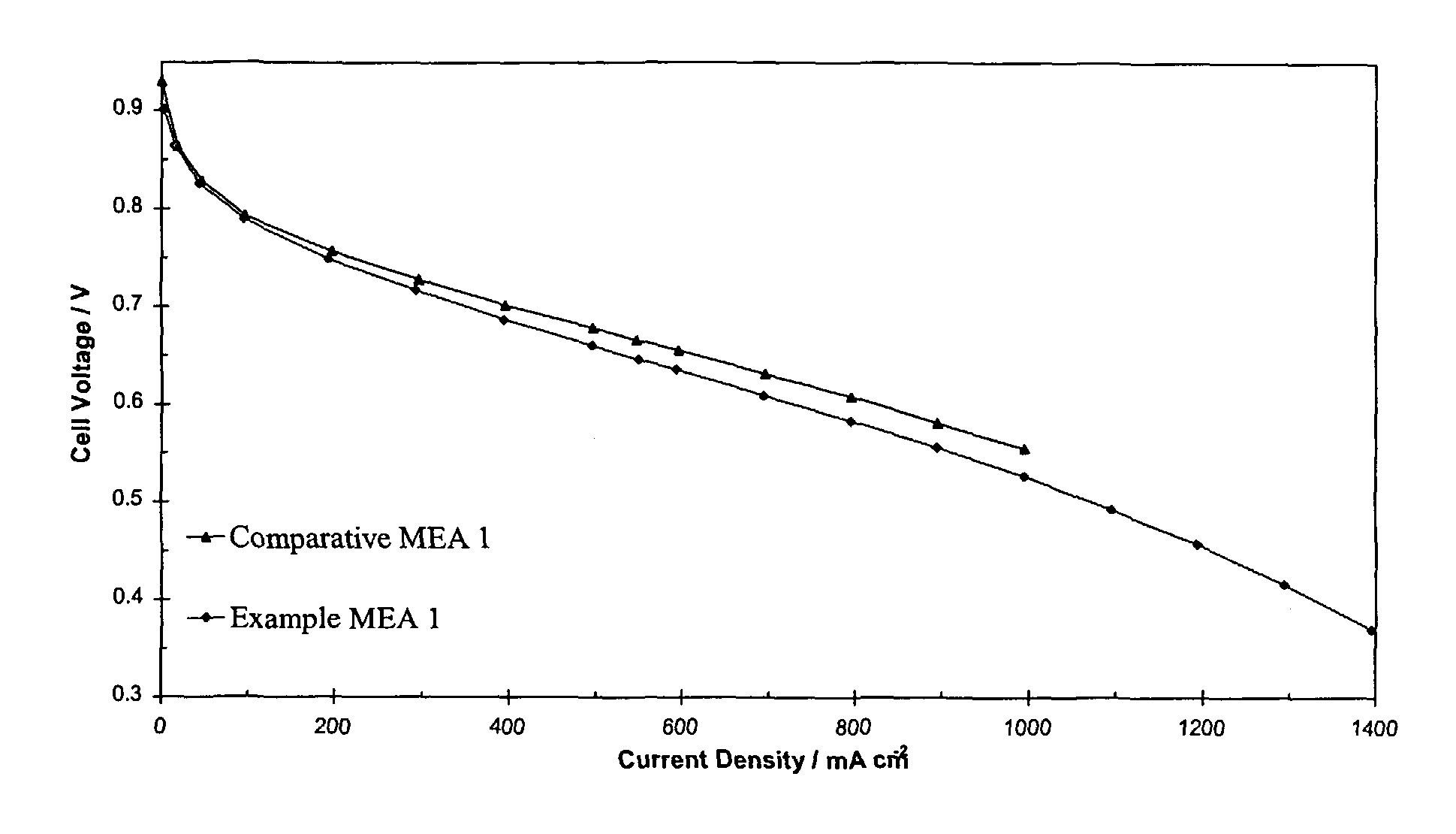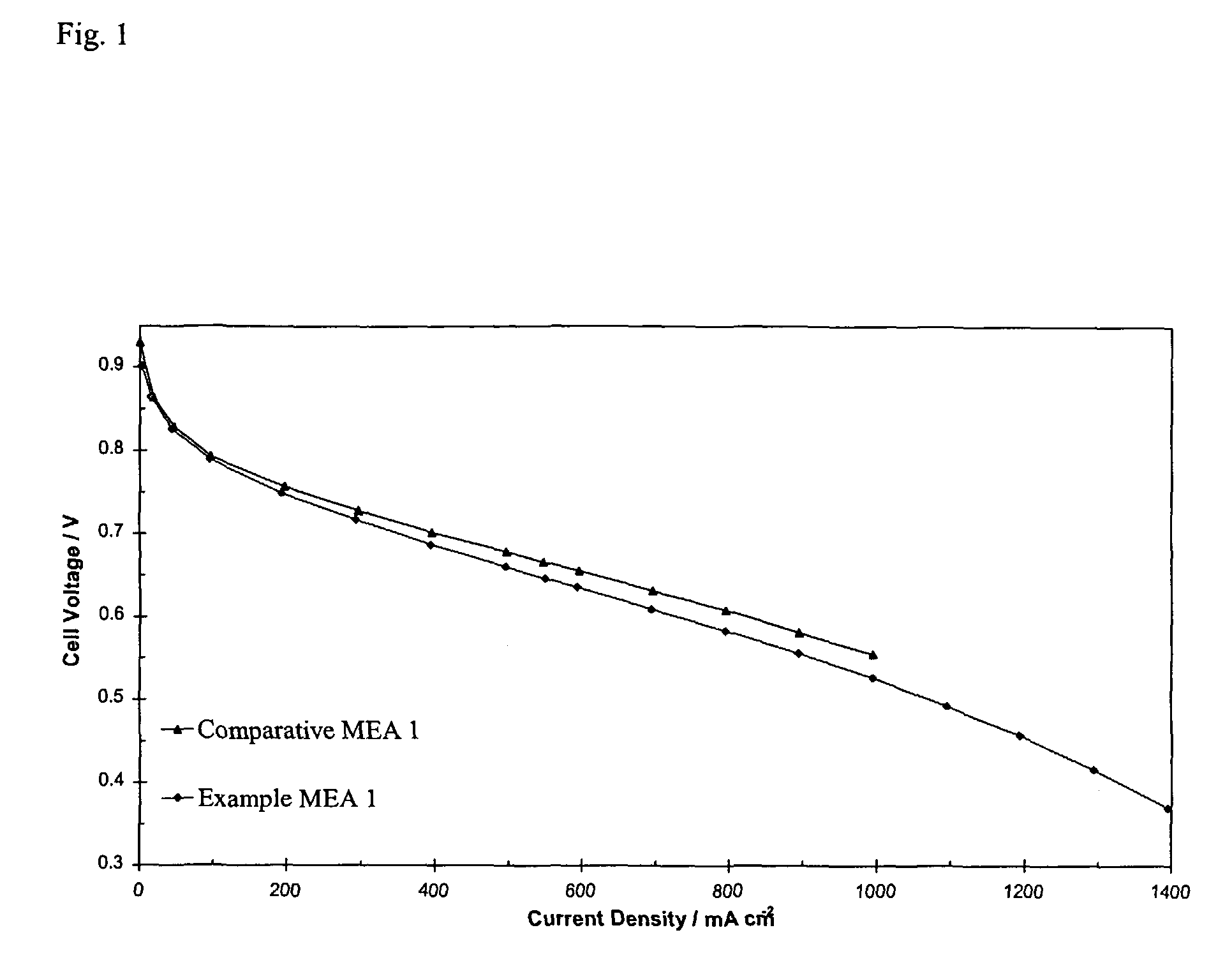Gas diffusion substrate
a technology of gas diffusion and substrates, applied in the field of gas diffusion substrates, can solve the problems of adding to the cost of the manufacturing process, and achieve the effects of improving conductivity, suitable conductivity, and being strong and flexibl
- Summary
- Abstract
- Description
- Claims
- Application Information
AI Technical Summary
Benefits of technology
Problems solved by technology
Method used
Image
Examples
example 1
Gas Diffusion Substrate
[0063]A fibre slurry containing 75 wt % (based on the weight of the solid components) SGL C30 6 mm carbon fibres (graphitised PAN) and 25 wt % SGL C30 3 mm carbon fibres (graphitised PAN) was prepared by adding the fibres to water and stirring. A PVA binder (Solvron NL2003) (10% by slurry dry weight) and a Texipol® 63-002 viscosity modifier (0.8% by slurry volume) were added. The fibre slurry was deposited onto a paper-making wire using a weir coater to form a wet non-woven fibre network.
[0064]A graphite / PTFE slurry was prepared by mixing a graphite suspension (AquaDag 18%, Acheson) and a PTFE suspension (Fluon GP1 solution, Asahi Glass) in a 4:1 ratio. The slurry was applied to the wet fibre network using a curtain coater and was pulled into the fibre network using a suction system. The wet substrate was dried and fired at 385° C. for 15 minutes.
example 2
Gas Diffusion Substrate
[0065]A fibre slurry containing SGL C30 6 mm carbon fibres (graphitised PAN) was prepared by adding the fibres to water and stirring. A PVA binder (Solvron NL2003) (15% by slurry dry weight) and a Texipol® 63-002 viscosity modifier (0.6% by slurry volume) were added.
[0066]A second slurry, containing graphite particles and PTFE, was prepared by mixing Timcal graphite flakes (T44) and a PTFE suspension (Fluon GP1 solution, Asahi Glass) (6% by dry weight) in water.
[0067]The two slurries were then mixed together in a forming tank and the fibre slurry was deposited onto a paper-making wire using a weir coater to form a wet non woven fibre network interspersed with graphite particles.
[0068]The wet substrate was dried and fired at 385° C. for 15 minutes.
example 3
[0069]Example MEA 1 was prepared using two gas diffusion substrates produced according to Example 1. Carbon / PTFE base layers were applied to one surface of each gas diffusion substrate. The gas diffusion substrates were positioned either side of a catalysed perfluorinated sulphonic acid membrane, with the base layers facing the membrane, and the assembly was laminated together. Comparative MEA 1 was prepared in exactly the same way except that the gas diffusion substrates were Toray®TGP-H-060 paper of approximately the same thickness as the gas diffusion substrates according to Example 1.
[0070]Both MEAs were tested in a fuel cell at 65° C. with 14.9 kPa hydrogen pressure and 14.9 kPa air pressure. FIG. 1 shows that the performance of Example MEA 1 was comparable to the performance of Comparative MEA 1.
PUM
| Property | Measurement | Unit |
|---|---|---|
| Temperature | aaaaa | aaaaa |
| Length | aaaaa | aaaaa |
| Length | aaaaa | aaaaa |
Abstract
Description
Claims
Application Information
 Login to View More
Login to View More - R&D
- Intellectual Property
- Life Sciences
- Materials
- Tech Scout
- Unparalleled Data Quality
- Higher Quality Content
- 60% Fewer Hallucinations
Browse by: Latest US Patents, China's latest patents, Technical Efficacy Thesaurus, Application Domain, Technology Topic, Popular Technical Reports.
© 2025 PatSnap. All rights reserved.Legal|Privacy policy|Modern Slavery Act Transparency Statement|Sitemap|About US| Contact US: help@patsnap.com


